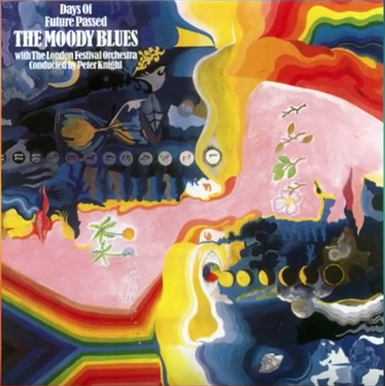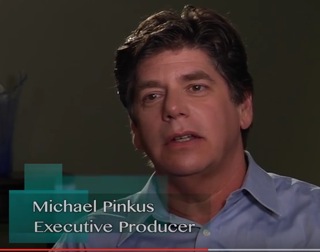By Julie Pendray
IDYLLWILD, Ca. — When the ethereal strains of “Nights in White Satin” hit the airwaves in 1967, radio DJs knew there was something different about them. Eventually the public caught on to the symphonic and trance-like sound that included the deep tones of a new keyboard instrument, the mellotron, accentuating the crescendos of the heartfelt melody.

The Moody Blues were on their way into the psychedelic era with the groundbreaking album Days of Future Passed. They set the tone from then on with a style that was “elegant, artistic and complicated,” according to music and documentary producer David Minasian. It earned the British band the highest of praise from Rolling Stone magazine, which dubbed them The Sistine Chapel of Rock.
Idyllwild International Festival of Cinema will rekindle the public’s love affair with that hit song next month with “The Story Behind Nights in White Satin,” Minasian’s movie, which is nominated for Best Documentary.

It’s Minasian’s first participation in the Idyllwild festival, which is coming into its seventh year. This week, in a phone interview, he said he’s “very excited.” The Hemet resident said he’s especially delighted that festival producer Trinity Houston is allowing time for one of his other movies, “Watching and Waiting,” too. Both highlight Moody Blues songwriter Justin Hayward.
Hayward was 19 years old when he wrote “Nights in White Satin.” He was facing the end of one love affair and the beginning of another. Soon after he penned the song, he joined The Moody Blues and offered it to them for the landmark album that became known as one of the first successful “concept” efforts.
Days of Future Passed was about the life of “everyday man” during one day, according to a BBC interview with Hayward in recent years. It also expressed humanity’s interest in the mystical. The band had been looking for fresh ideas and a new sound. They decided to drop acid to pave the way.
“We were searching for some kind of enlightenment,” Hayward said in the interview. (LSD) opened the door in my mind. I could see the world as it really was.”

In the “White Satins” documentary, we hear how the delay of a flight bringing The Supremes to a television show in France gave The Moody Blues an opportunity to go on-air with its brand new song that would become a mega hit. The documentary shows the first time the group performed the song on film. It was shown on French television within days of the album’s release.
“The whole story of how this song became a hit is interesting,” Minasian said. “Days of Future Passed was a demo record to showcase stereo, which was just coming out. Decca wanted to show that stereo could be used for both orchestral music and rock. They decided to come up with an album that blended both.”
The album features The London Festival Orchestra.
“The song didn’t even reach number 1 on Billboard until 1973,” Minasian said. “Half the people at Decca wanted to release it and half didn’t. Some thought it was too long.”
“Nights in White Satin” expresses the sweetness and exhilaration of love, with the mellotron for grand dramatic effect. It was the single that propelled the album to fame.
“The mellotron hadn’t been used before,” Minasian said. “It was difficult to play. The only guy who could play it was Mike Pinder, the keyboardist in The Moody Blues, because he’d worked for the manufacturer. Nothing else sounded like it.”
The Moody Blues went on to sell more than 70 million albums worldwide, collecting 18 Platinum and Gold Discs.
Minasian’s documentary is one of an estimated 100 movies and shorts to be presented at Idyllwild International Festival of Cinema Jan. 5 to 10 at various venues. Idyllwild is a mountain town between Palm Springs, Los Angeles and San Diego. The festival draws tourists and movie makers from all over the United States and the world.
“The Story Behind Nights in White Satin” will screen at 7 p.m. Jan. 6 at The Rustic Theatre. Minasian and executive producer Michael Pinkus will do a question and answer session with viewers after the movie, then there’ll be a screening of “Watching and Waiting,” a piece about a solo Hayward concert. For more information on the screenings and accompanying VIP reception, click here.

Minasian and Pinkus have worked with Hayward and The Moody Blues on a variety of projects. DVDs of some of the Hayward performances are available through PBS stations.
Today’s version of The Moody Blues band includes original 1964 drummer Graeme Edge, along with Hayward and bassist John Lodge from the 1966 lineup. They’ll start a 23-cities tour March 3 in Florida. For details, click here.
To see the schedule of the Idyllwild festival screenings click here. Tickets are available through the festival web site
Copyright Julie Pendray and SpecialsNotOnTheMenu.com




